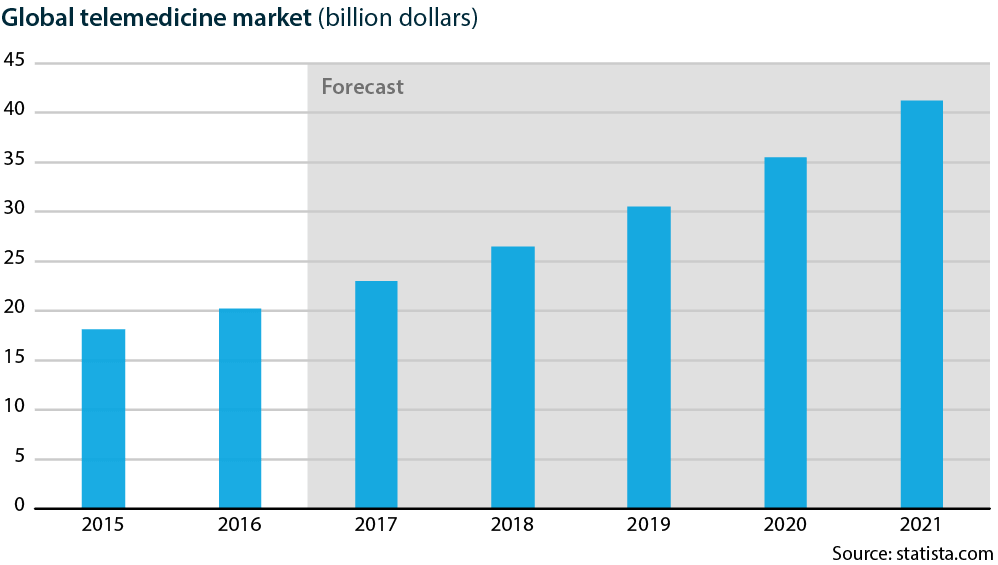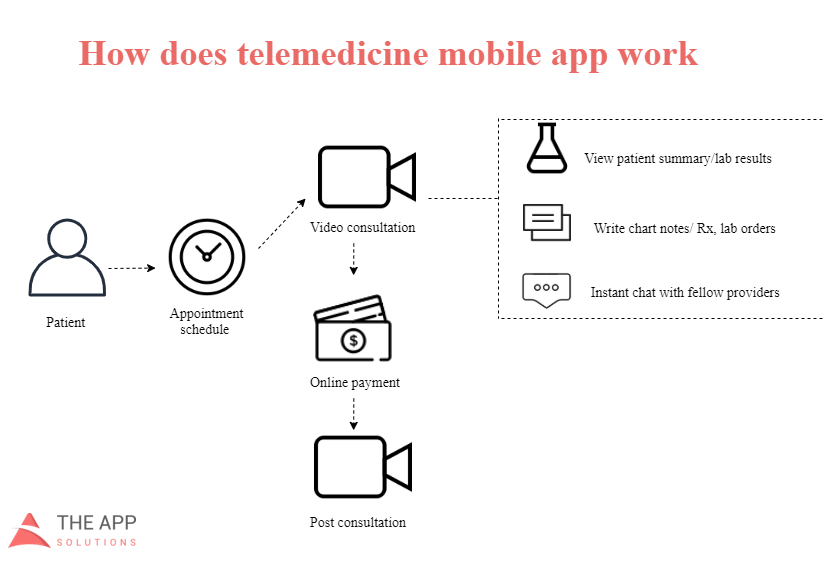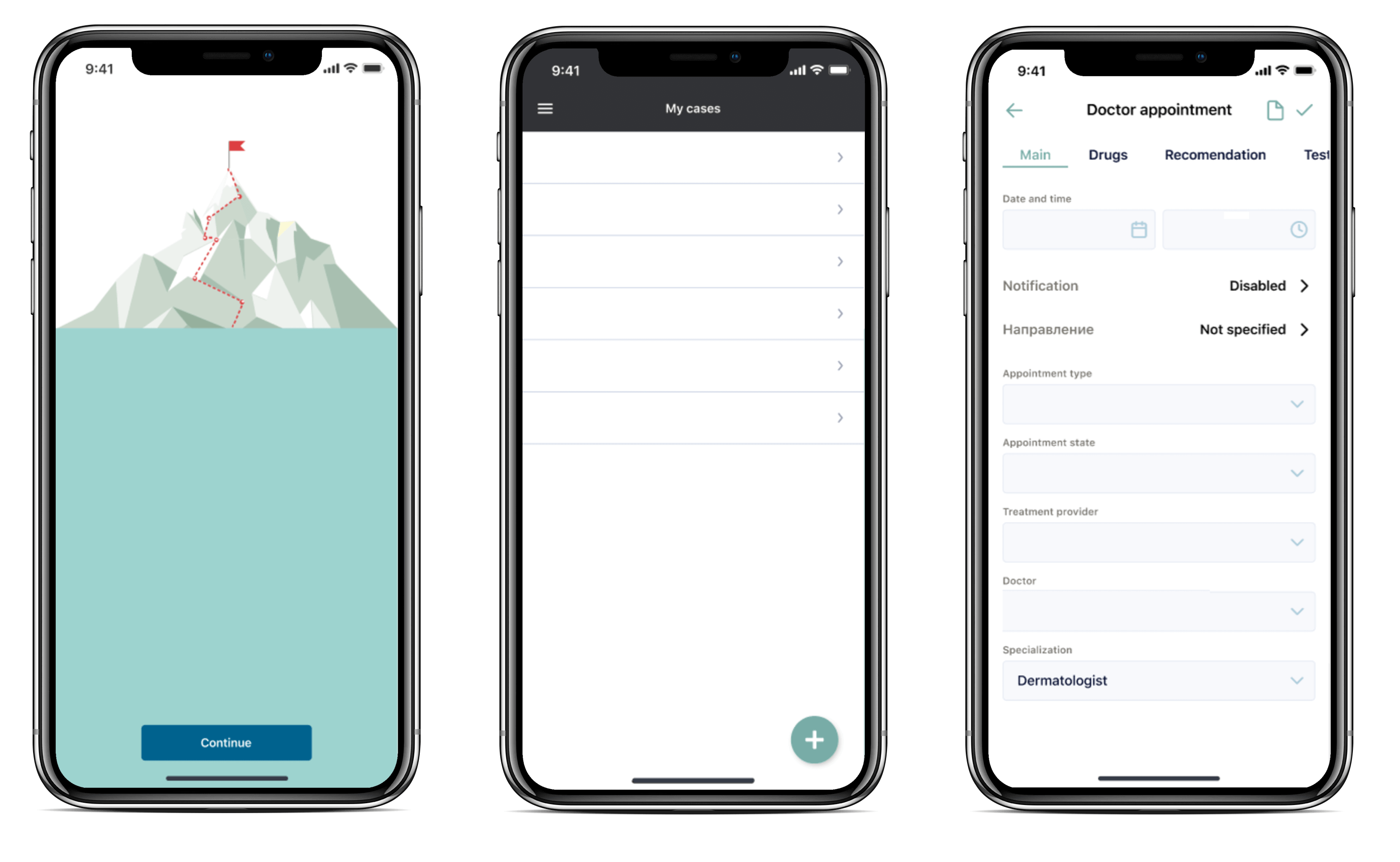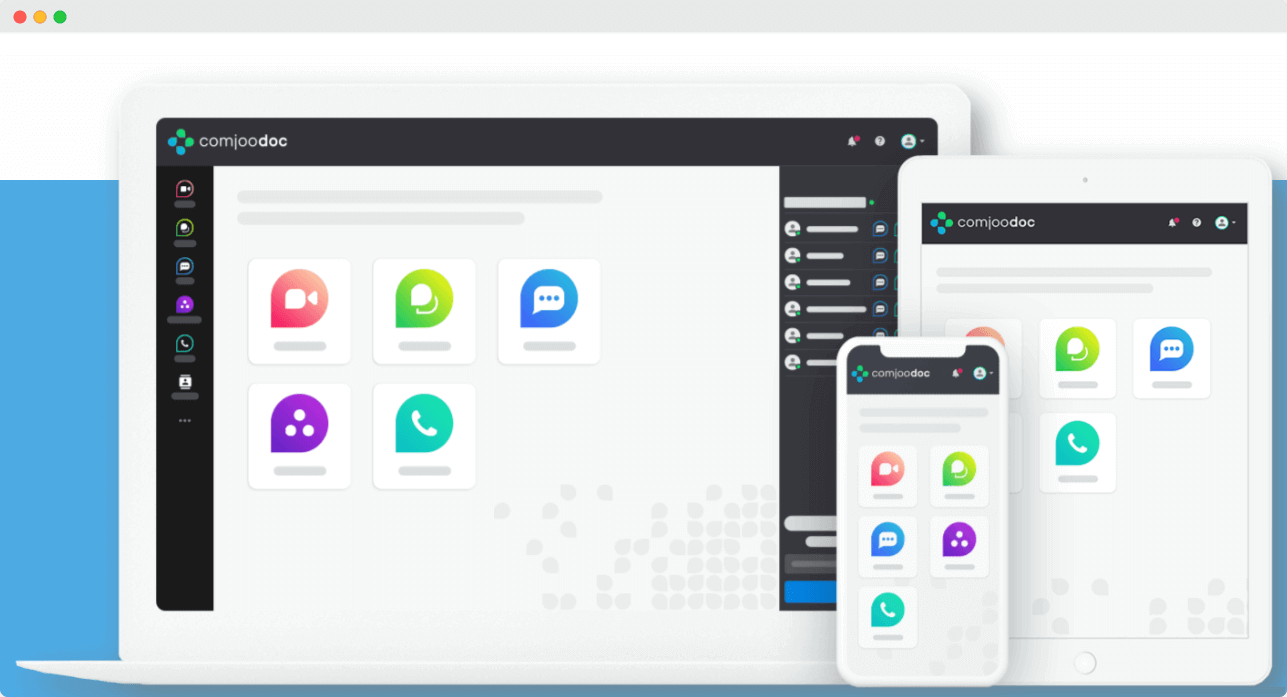A guide on how to create a telemedicine app like Doctor-on-demand
- Why there is a need for doctor-on-demand app development
- How does a doctor on-demand mobile app work?
- The most popular doctor-on-demand mobile apps
- Essential Features of telemedicine mobile app
- Telemedicine app features for patients
- Telemedicine app features for doctors
- How to develop a telemedicine app
- Get ready for telemedicine app development
Imagine that you came home on Friday evening and are suffering from an awful stomach ache. What would you do? Put up with the pain for the rest of the weekend? This what may happen in a world without doctor-on-demand platforms. Thanks to telemedicine applications, you can schedule an appointment with a doctor, receive a consultation, get a receipt, and even pay for such a service.
If you consider developing a doctor-on-demand mobile app, this article is right for you. Below, we highlight the main benefits of telemedicine apps, talk about the best telemedicine solutions, and list the main features of such an app.
But first, let’s find out why there is a need for telehealth apps.
STEP-BY-STEP GUIDE ON MOBILE APP HIPAA COMPLIANCE
Why there is a need for doctor-on-demand app development
As we have said, telemedicine bridges the gap between patients and doctors. But why does such a gap exist? Let’s see.
Need for telemedicine app from the patient’s perspective
A survey conducted in 15 major cities in the U.S. showed that new patients need to wait 24 days to get an appointment with a physician. For this reason, one of three patients said they have gone to the emergency department to avoid delays and the inconvenience of visiting their physicians.
- 82% of patients agreed that developing technologies should make the process of receiving healthcare as accessible as hailing a taxi or ordering food
- 77% of them want to contact their physician via text messages
- 69% of patients prefer virtual appointments with their physicians using a mobile device over offline visits.
WHY CREATE A CUSTOM MENTAL HEALTH APP
Need for telemedicine app from a medical professionals perspective
At the same time, doctors are faced with the following challenges that telemedicine apps may solve:
- The daily pressure of cutting costs
- Complying with regulations
- Maintaining a regular operation
- Time mismanagement off their schedule impacts their work-life balance
In a nutshell, telemedicine mobile apps are a win-win for both doctors and patients. That is why the market size of telemedicine apps is expected to reach 40 billion dollars by 2021, according to a report from Statista.

Now let’s find out what benefits such digital health solutions bring.
What solutions can we offer?
Find Out MoreHOW TO MAKE EHR/EMR EPIC INTEGRATION WITH YOUR HEALTH APP
Benefits of developing a telemedicine app
Like Uber, Airbnb, Lyft, and other on-demand service applications, telehealth apps allow providing better health service at lower costs, which result in the following benefits:
Flexibility. Using doctor-on-demand-mobile apps, medical professionals receive more control over their working hours as well as the ability to respond to emergencies more effectively.
Extra revenue. Such mobile doctor apps allow medical specialists to generate additional revenue for after-hour care, as well as the ability to see more patients, compared to office face-to-face appointments.
Increased productivity. Doctor-on-demand mobile apps are more accessible for patients to get to, which minimizes wasted time due to traffic and other issues, thus improving the treatment outcome.
Related readings:
Calmerry Online Therapy Platform
BuenoPR – 360° Approach to Health
Orb Health – Сare Management As A Virtual Service
How does a doctor on-demand mobile app work?
Each telemedicine app has its working logic. Still, the average flow of doctor-on-demand apps goes like this:
- To receive a consultation from a doctor, a patient logs-in to the system creates an account, and describes their symptoms.
- Next, depending on the user’s health condition, the app searches for the most suitable medical specialist nearby.
- After finding a doctor, a patient can schedule a video call via the app using a built-in calendar.
- During the video consultation, a doctor communicates with the patient, asks about health conditions, recommends treatment, assigns lab tests, and so on.
- When the video consultation ends, the patient pays for healthcare service using a built-in payment gateway and receives receipts with prescribed meds and doctor’s recommendations.

[How does telemedicine mobile app work]
HOW TO MAKE A MEDICAL APP: THE ULTIMATE GUIDE
The most popular doctor-on-demand mobile apps
If you are considering developing a doctor-on-demand mobile app, you need to be aware of similar apps currently presented on the market and their features. To save you time and effort, we have gathered telemedicine applications below.
ZocDoc telemedicine platform
ZocDoc, a mobile doctor app, is available in all the U.S. and serves 6 million patients every month. ZocDoc, includes appointment scheduling, reminders about upcoming appointments, search for a doctor using integrated Map, and others.
DoctorOnDemand
Doctor OnDemand is a telemedicine application for health care that provides patients with video appointments, messaging, and even receiving prescriptions. The platform counts 1,400 state-licensed physicians across the U.S. The core features of this mobile app include online video appointments, search for a necessary specialist, appointment scheduling, patient data storage, a built-in payment gateway, and integrated maps with local pharmacies to buy prescription drugs.
HealthTap
HealthTap is both an app for iOS, Android as well as a website for virtual meetings with doctors. HealthTap users receive such features as online video consultation, secure in-app messages, payment gateway, and so on.
Now that you are aware of the industry leaders and their features, it is time to select the essential functions for your doctor-on-demand mobile app.
Healthcare Apps Development: Types, Examples, And Features
Essential Features of telemedicine mobile app
When developing a telemedicine app, consider these features for your app’s MVP:
Telemedicine app features for patients
The patient side of the app should include the following features
- User sign-in
When a new user logs in to your app, one needs to create an account with information about chronic conditions, as well as provide information about age, sex, and insurance.
- Search for a medical specialist
When the patient wants to find a necessary specialist, one uses a search with geolocation to find the nearest doctor available to book an appointment. To make your app compliant with medical regulations, we suggest you integrate the Google Maps platform via a third-party API that determines the patient location and nearby pharmacies before a video consultation begins.
- Video appointments
Video calls are an essential feature of any mobile telemedicine app. Video calls connect patients and doctors and enable live communication. However, you need to consider using HIPAA compliant telemedicine solutions to keep your app safe from data breaches. Thus, to keep the app users’ information safe, we recommend using ready-made third-party API for video calls, such as Daily.co.
- Payment gateway
After the consultation, a patient pays the doctor for the service provided. To achieve this, you need to integrate a payment gateway via API. In one of our previous articles, we have already described the process of payment gateway integration to an app. To learn more, follow the link.
- Doctor review
Once the patient has received medical treatment from a doctor, one can leave reviews and tell about the experience and rate the doctor.
THE APP SOLUTIONS – CUSTOM HEALTHCARE SOFTWARE DEVELOPMENT COMPANY
Telemedicine app features for doctors
- Doctor Panel
Such a panel is a part of the telemedicine app for doctors, integrated with electronic health records that contain information about patients, drug prescriptions, and a calendar with scheduled appointments.
- Manage appointments
Once the patient finds the necessary medical professional, one needs to book an appointment via the app and place information about health conditions and medical records, if required. The app should automatically manage time slots and show when one or another specialist is available.
- In-app messages
To allow patients and doctors to send secure messages within an app, exchange prescriptions, reports, and x-rays, you need to pay extra attention to the technical solutions you will choose. All the information mentioned above belongs to patient sensitive data and needs to meet telemedicine regulations. Therefore, consider using GDPR and HIPAA-compliant messaging platforms, like Q-municate. This technological solution could be integrated into your app via REST-API or SDK.
If you are still in doubt about whether to develop a telehealth mobile app for your health organization, just take a look at the statistics below.
With this in mind, let’s see how to develop a doctor-on-demand mobile app
HEALTHCARE CYBERSECURITY: HOW TO PROTECT PATIENT DATA
How to develop a telemedicine app
Below, we describe the step-by-step process of developing a doctor-on-demand mobile app.
Step 1. Ask mobile app developers for a quote
For this step, you need to fill out the contact form or mobile project cost calculator and tell us as many details about your telemedicine software as possible.
Step 2. Create the project scope for a telemedicine platform’s MVP
Our business development manager will get in touch with you to sign an NDA, clarify project details, and create a project brief. Then, our business analyst and project manager will show you a list with app features for the project’s MVP, generate the project mock-ups, and prototypes.
Step 3. Enter the development stage
When the MVP project scope is agreed upon, our team will break the app features into small user stories that are easier to implement. Next, we start developing the code, test it, and conduct bug-fixing iteration by iteration.
Step 4. Approve the app’s demo
When the app’s MVP is ready, our team will show you the result during the project demo. If you are satisfied with the results, we upload the project MVP to the app marketplace and start implementing more sophisticated features.
Step 5. Launch your app on app marketplaces
When all the app features from the project scope are implemented, we run the final product demo and give your app the project-related data, including databases, access to app stores, mock-ups, and designs. Finally, your doctor-on-demand mobile app, with all the features available on the app marketplaces, is ready to serve your users.
Considering Developing a Healthcare Mobile App?
Download Free EbookThe APP Solutions Experience: Success Story
A White Label Telemedicine Platform – Case Study
The client is the owner of a medical center in Berlin, Germany. After the COVID-19 outbreak, he faced the need to provide patients with a distance communication solution to decrease the number of offline visits, while enabling doctors to monitor vital patient health data and streamline communication with a laboratory.

After working with us, the client received a white-label telemedicine platform with advanced features that took us two months.
The while-label platform brings benefits to both types of users:
Medical professionals can exchange files with patients via secured live chat, send, and receive laboratory tests in a more streamlined way.
Patients can receive high-quality medical services in the comfort of their homes, schedule appointments with doctors, attend medical meetings online, get receipts for medication, and medical treatment plans with a daily schedule. The app also allows patients to pay for medical services online.

Get ready for telemedicine app development
Telemedicine mobile applications improve the lives of both patients and doctors – while patients receive medical treatment in the comfort of their homes, medical specialists can provide medical treatment more effectively, while getting paid for a consultation immediately.
To start the development process of your doctor-on-demand mobile app you need to shape your business idea with a monetization strategy, think about the app design and app layout, as well as HIPAA-compliant solutions to use.
